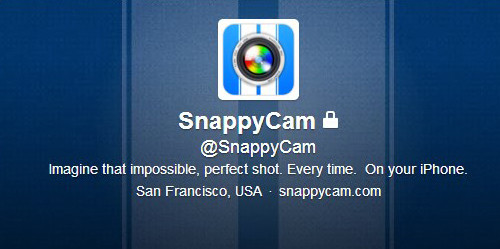Apple has acquired yet another company: SnappyLabs, the one-person development outfit responsible for creating a camera app that offered a blisteringly fast burst mode to iPhone cameras long before the iPhone 5S arrived on the scene.
The SnappyLabs website has been shuttered and the app removed from the Apple App store, but Apple has confirmed in a statement to Re/code that it did in fact buy the company.
Burst shooting modes are an incredibly useful for capturing that mythical perfect shot. If you can capture multiple images every second, you have a much better chance of getting a focused, well-lit shot of whatever hilarious thing your cat is up to. But capturing all of those images requires lots of heavy lifting from camera hardware — on smartphones, burst shooting generally sacrifices image quality for speed, resulting in plenty of shots that are a much lower resolution than what your camera is capable of.
SnappyCam aimed to change all that. Developer John Papandriopoulos designed a JPEG-compression engine optimized for ARM processors that compresses images far faster than the iPhone’s native hardware does. The SnappyLabs site has been taken down, so I can’t use it to show how this works, but the Internet Archive has a cache of a very informative blog post that details the process. In short, the app enabled the iPhone 5’s camera sensor to capture 8-megapixel photos at a rate of 20 frames per second. Compare that to the Samsung Galaxy S4, which SnappyLabs claims shoots comparable, full-sensor photos at an average of 7.5 photos per second. The iPhone 4S saw a boost too, capturing 12 pictures per second at 8 megapixels.
When the iPhone 5S came out in September, Apple added a burst mode that snaps 10 photos per second. It’s not fair to make a direct comparison, as the iPhone 5S’s larger image sensor adds a wealth of improvements to image quality, but the improved burst potential afforded by SnappyCam would make for a decidedly speedier experience.
Acquiring SnappyLabs, and more importantly, the technology behind SnappyCam, gives Apple direct access to a dramatically improved burst mode experience that doesn’t require any new hardware. This has the potential to make one of the best smartphone cameras even better without requiring developing entirely new hardware. And it keeps the iPhone maker ahead of the competition: Sources told TechCrunch that Apple was only one of the “usual players” interested in snapping up SnappyLabs.
Last year, Apple acquired mapping firm BroadMap and the minds behind the note-taking app Catch, among many other smaller companies. While the purpose for any of these acquisitions aren’t explicitly revealed, it stands to reason that Apple is keen on improving the quality and performance of its own native apps and hardware as efficiently as possible. It’s premature to speculate on what exactly will result from all of these acquisitions, but it stands to reason that the iPhone’s camera will see some subtle but significant refinements that are tired to SnappyLabs’ innovations.


